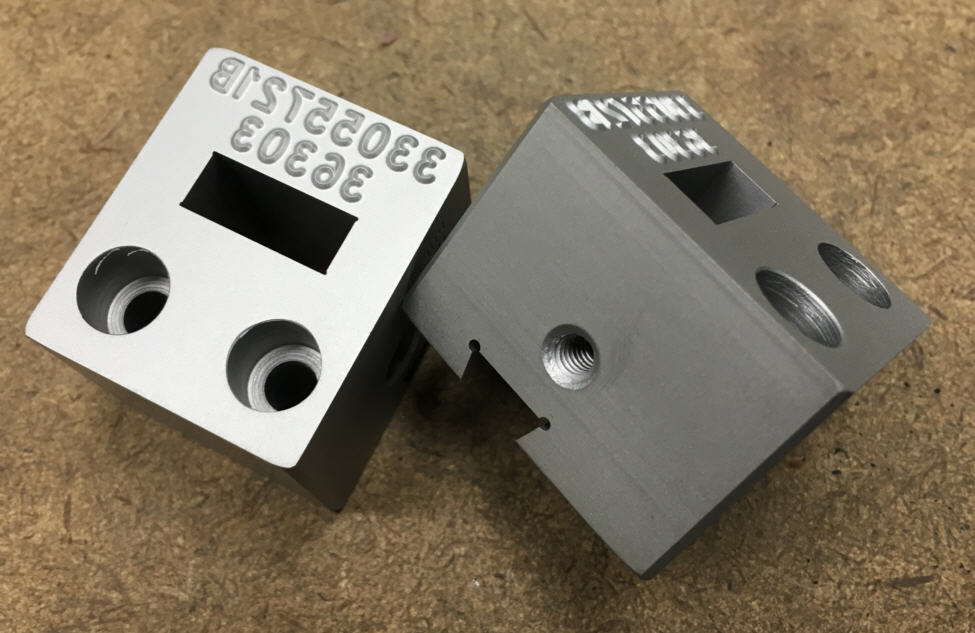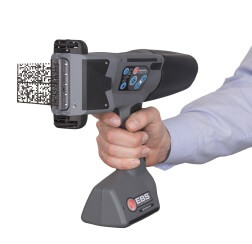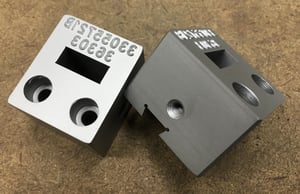
Durable Technologies' customers continually push us to discover new and creative ways to address challenges in the process of identifying parts. Sometimes we can get down in the weeds and we need to pull back and look at the bigger picture and put direct part marking and part identification in the proper context.
 The Importance of Accurate Part Identification
The Importance of Accurate Part Identification
Why do companies need to identify their parts?
Accurate part identification is crucial in most industries to ensure quality control, traceability, and compliance with regulations. Without accurate part identification, manufacturers risk using incorrect components, which can lead to product defects, safety issues, and costly recalls. By implementing effective direct part marking methods, companies can enhance their production processes and maintain high standards of quality.
Accurate part identification is essential for inventory management, warranty tracking, and aftermarket services. It enables organizations to quickly locate and retrieve specific parts when needed, improving overall operational efficiency and customer satisfaction.
We identify everything now and companies have data management systems to process all the information and create actionable analytics.
If it is not identified, it does not exist in most modern manufacturing environments.
 Challenges Faced in Part Identification Methods
Challenges Faced in Part Identification Methods
Despite the importance of accurate part identification, companies often face challenges in this area. Common obstacles include human error, outdated marking techniques, inconsistent data capture, and difficulties in reading or decoding markings. These challenges can result in misidentified parts, production delays, and increased costs.
Moreover, in industries where parts are exposed to harsh environments or undergo frequent handling, traditional marking methods such as labels or tags may not be durable or reliable enough. This can lead to illegible or missing identifiers, causing confusion and errors in part identification.
Rugged and reliable identification is why traditional marking methods like hand stamps, pneumatic presses, stamping dies, and numbering heads still have a place in advanced manufacturing operations.
Advancements in Technology for Part Identification
To address the challenges in part identification, advancements in technology have introduced direct part marking (DPM) methods like laser engraving, dot peening, and inkjet printing to provide permanent and high-contrast markings that are resistant to wear and tear.
These advanced techniques improve the readability and durability of part identifiers, ensuring accurate identification throughout the product lifecycle.
The integration of automation, machine learning, and barcode scanning technologies has enhanced the speed and accuracy of part identification processes. By leveraging these technological advancements, companies can streamline their operations, reduce errors, and optimize their supply chain management.
 Implementing Efficient Part Identification Strategies
Implementing Efficient Part Identification Strategies
To overcome the challenges in part identification, companies should develop efficient strategies tailored to their specific needs. This may involve implementing DPM technologies, upgrading identification systems, standardizing marking formats, and training employees on proper identification procedures.
By establishing clear guidelines and best practices, organizations can enhance the reliability and consistency of their part identification processes.
Collaborating with experienced suppliers, like Durable Technologies, implementing automated tracking systems, and conducting regular audits can further improve the accuracy and traceability of part identification.
By continuously refining their strategies and embracing innovative technologies, companies can stay ahead of the competition and meet the demands of a rapidly evolving market.
Benefits of Streamlining Part Identification Processes
Streamlining part identification processes offers numerous benefits to organizations, including increased productivity, reduced errors, and improved inventory management. By eliminating manual data entry, minimizing rework, and enhancing data accuracy, companies can optimize their resource utilization and minimize production downtime.
Moreover, efficient part identification enables faster decision-making, better quality control, and enhanced customer satisfaction. By delivering the right parts to the right place at the right time, organizations can build trust with their customers, strengthen their brand reputation, and drive long-term success.
Making your mark has never been more important. Talk to the experts at Durable Technologies and make sure you have the tools to solve all of your part identification challenges.




